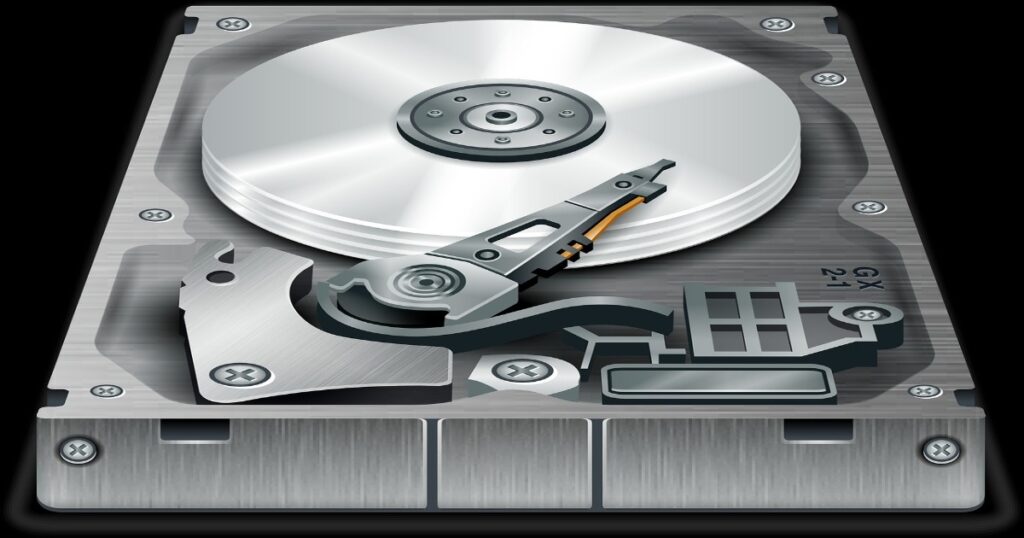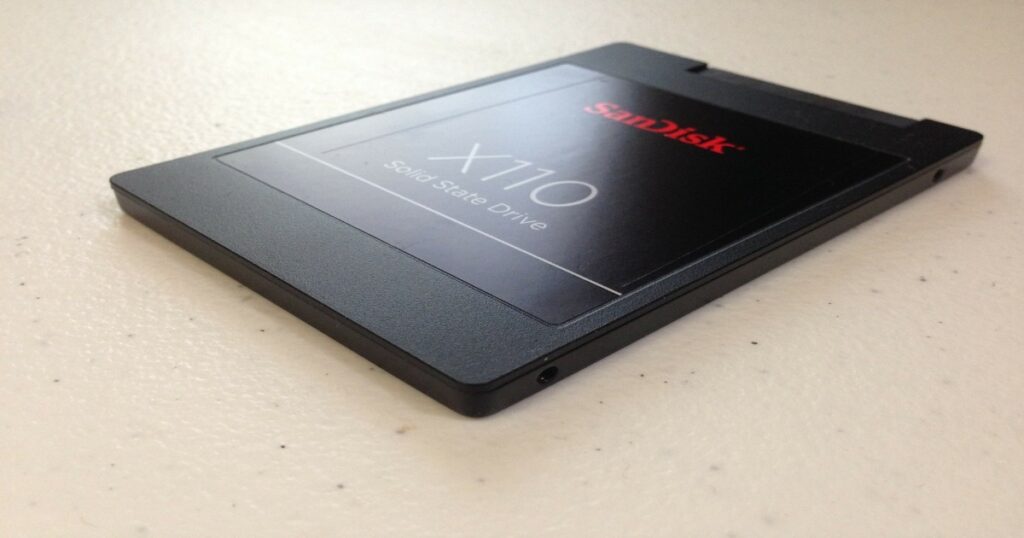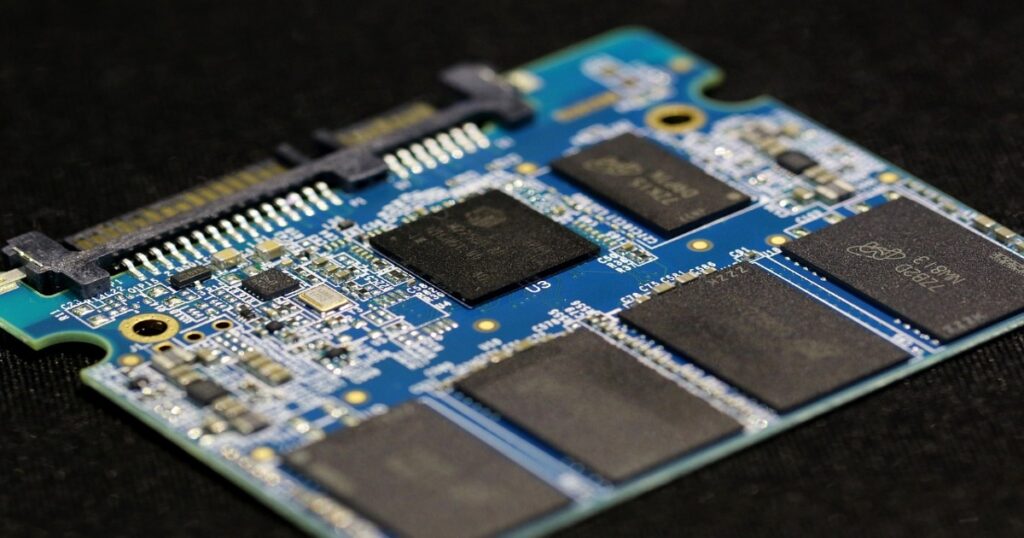Today we are going to discuss this topic – ‘HDD vs SSD – Which One Will Be Better for You’? In this post, we are going to clear your all HDD vs SSD related doubts, and discuss the advantages, disadvantages, limitations of the hard drives, and so on. So, if you are really interested in this topic then stay tuned with us, and Let’s go.
For processing any kind of information or instructions on the computer, they need to be stored in a specific place. All the data and instructions can be stored in special locations of the computer called the MEMORY. Depending upon the type of storage, two basic types of memories are the Primary Memory, and Secondary Memory.
1. Primary Memory
Primary memory storage is the component of the computer that holds data, programs, and instructions that are currently in use. Primary storage is located on the motherboard. As a result, data can be read from and written to primary storage extremely quickly.
The Primary Memory Is the Main Memory of the Computer which is accessed directly by the CPU and for this, a computer can’t run without it. This includes several types of memory, such as the PROCESSOR CACHE and SYSTEM ROM. However, in most cases, primary memory refers to SYSTEM RAM.
2. Secondary Memory
Secondary Memory is another type of computer memory that is Non-Volatile, and persistent in nature, and is not directly accessed by a computer/processor. It allows a user to store data that may be instantly and easily retrieved, transported, and used by applications and services. Secondary memory is also known as secondary storage, or Backup memory, or Additional memory, or Auxiliary memory.
Hard Disk Drives (HDDs), Solid State Drives (SSDs), Flash, Optical Drives, and USD Drives are some examples of secondary memories in computers.
Today We Will Discuss These Two Types of Secondary Memory Devices HDD and SSD, and also discuss the differences between them in a detailed and simple way. At first, we need to know some important things about HDD and SSD, so that the differences between them can be easily found, and understood. So, Let’s Continue.
What Is The Hard Disk Drive (HDD)?
A Hard Disk Drive (HDD), Hard Disk, Hard Drive, or Fixed Disk is an electro-mechanical, and Non-Volatile data storage device that stores and retrieves digital data using magnetic storage, and one or more rigid rapidly rotating platters coated with magnetic material.
HDDs are usually installed inside desktop computers, mobile devices, consumer electronics, and enterprise storage arrays in data centers. They can store operating systems, software programs, and other files using magnetic disks.

- A hard disk drive (HDD) is a non-volatile computer storage device containing magnetic disks, or platters rotating at high speeds.
- More specifically, hard disk drives control the reading and writing of the hard disk that provides data storage.
HDD means the data is retained when our computer system is shut down. The HDD was introduced by the IBM Corporation. IBM unleashed the world’s first computer hard disk drive in 1956. It was bigger than a refrigerator. It weighed more than a ton. The commercial usage of hard disk drives (HDD) began in 1957, with the shipment of a production IBM 305 RAMAC system including IBM Model 350 disk storage.
How Does A Hard Disk Drive (HDD) Work?
In this section, we will briefly discuss how a hard disk drive actually works. Hard disk drives consist of one or more magnetically-sensitive platters, an actuator arm with a read/write head on it for each platter, and a motor to spin the platters and move the arms.
The hard drive contains a spinning platter with a thin magnetic coating. A ‘head’ moves over the platter, writing 0’s and 1’s as tiny areas of magnetic North or South on the platter.

There is also an I/O CONTROLLER and FIRMWARE that tells the hardware what to do and communicates with the rest of the system. The hard disk is made up of a number of spinning magnetic platters that store data, and a number of reading/writing heads on mechanical arms that move on the surface of the platters.
To read or write data at a certain sector of a platter, the head has to move to the appropriate position and then needs to wait for the sector to pass underneath it when the platter rotates.
Advantages of the HDD
Here, are the advantages/benefits of using HDD:
- One of the significant advantages of a Hard Disk drive is that its cost is low. A conventional hard drive will in general be less in cost than a Solid state drive of a similar limit.
- The base limit of a HDD is normally higher than a SSD. Regardless of different stockpiling limit choices, the standard limit that most clients lean toward has discovered to be 500GB.
- Another advantage of Hard Disk Drive is that it is readily available in the market.
- It is fixed inside the computer so it can’t be lost. Computers can communicate with them easily.
- HDD device can store operating system files and software related files. It sizes very small, and it is portable in use.
Disadvantages of the HDD
Here, are the disadvantages of using HDD:
- Drives have a more slow normal speed than any type of blaze memory. The speed of reading and writing in HDD is slower than the SSD. A PC or Mac with an SSD boots faster, launches and runs apps faster, and transfers files faster.
- If hard disk crashes, the computer will not work. You will lose your important data if the HDD drive crashes/ damages. In the case of hard disk failure, it is difficult to perform the data recovery.
- HDDs are also noisy. Another disadvantage of HDD is energy inefficiency. HDDs consume more power.
- This disk was inside in computer, so it cannot easily transfer another computer. If it eventually fails, the whole computer stops working at the same moment or at that time.
What Is The Solid State Drive (SSD)?
A Solid-State Drive (SSD) is a new generation of storage devices used in computers. It uses integrated circuit assemblies to store data persistently, typically using Flash Memory, and functioning as secondary storage in the hierarchy of computer storage.
SSDs use flash-based memory, which is much faster than a traditional mechanical hard disk. Upgrading to an SSD is one of the best ways to speed up your computer.

- Solid State Drive (SSD) is a non-volatile storage device that stores and retrieves data constantly on solid-state flash memory. However, this data is stored on interconnected flash memory chips instead of platters, which makes them faster than HDDs. It provides better performance compared to HDD.
- It is also sometimes called a Semiconductor Storage Device, a solid-state device or a solid-state disk, even though SSDs lack the physical spinning disks, and movable read–write heads used in hard disk drives (HDDs), and floppy disks.
Unlike the HDDs (Hard Disk Drives), SSDs do not have any moving parts. That’s why they are called solid-state drives. The first version of SSDs was RAM-based invented by StorageTeK in 1978. Flash memory-based SSDs were introduced in 1989 by Western Digital. Early SSDs were implemented with the NOR flash memory structure due to their high performance.
The first commercial flash-based SSD was shipped by SanDisk in 1991. It was a 20 MB SSD in a PCMCIA configuration, and sold OEM for around $1,000, and was used by IBM in a ThinkPad laptop.
How Does A Solid State Drive (SSD) Work?
Here, we will briefly discuss how a solid state drive (SSD) actually works. SSD drive works completely differently than a HDD. Like USB drives, SSDs use flash memory to store data, which is accessed digitally.
A hard disk drive (HDD) uses a spinning platter and an arm that moves across the platter to read each portion of data. It uses a solid state medium, typically NAND (often known as flash). Data is written to or read from the NAND by a controller, which is considered as the brains of the device.

With SSD, there is no variable seek time or rotational latency because all the parts of the SSD can be accessed in the same amount of time. SSD read and write speeds are uneven, so data reads are very fast, but SSD write speeds are quite slow.
An SSD controller performs several functions, including keeping track of where data is located. An SSD controller, also referred to as a processor, includes the electronics that bridge the Flash memory components to the SSD input/output interfaces. The controller is an embedded processor that executes firmware-level software. The SSD firmware is device specific, and in most cases can be updated.
Advantages of the SSD
Here, are the advantages/benefits of using SSD:
- SSDs consume less power. The speed of reading and writing the data is faster.
- SSD drive offers access speed of 35 to 100 micro-second. So it is able to deliver 100 times the performance of HDDs.
- SSD drives are resistant and highly durable. Due to the high speed of SSDs, files are transferred quickly.
- SSDs have lightweight components or moving parts, as they are more mobile-friendly and are much better suited for constant travelling.
- The main advantage of SSD is that it produces less noise because SSDs are non-mechanical. SSD uses flash memory to store data, which provides better reliability.
Disadvantages of the SSD
Here are some of the disadvantages of using SSD:
- Cost is the most significant disadvantage of Solid-State Drives because they are very expensive compared to the HDDs.
- Due to the unique file system structure of an SSD, data extraction can be an extremely difficult, and lengthy process. Because the data recovery process is so difficult, and takes so long, it can be quite expensive.
- The memory chips in an SSD have a limited number of write cycles, which can lead to unrecoverable data loss.
- The maximum capacity of an SSD is limited and also less. Though, advancements in flash memory are consistently increasing the storage capacity of SSDs.
- If the controller chip, memory cache, or one of the NAND type memory chips has been physically damaged, your data may be completely inaccessible.
| HDD | SSD | |
| FULL FORM | HDD is an abbreviation of Hard Disk Drive. | SSD is an abbreviation of Solid State Drive. |
| LATENCY | There is a Higher Latency in HDDs. | There is a Lower Latency in SSDs. |
| SIZE | The size of the HDD devices is larger. | The size of the SSD is more compact. |
| COST | HDDs are cheaper and you can get more storage space. | SDDs are more expensive than HDDs because they are newer and more advanced in technological design. |
| R/W TIME | The time for reading and writing the data in HDD is longer. | SSD has a shorter Read and Write time. A solid state drive reads up to 10 times faster and writes up to 20 times faster than a hard disk drive. |
| DRIVE CAPACITY | HDD is available in various different capacities. HDDs can go anywhere from 250GB to 20TB. | An SSD drive offers limited storage capacities. SSDs for computers are available in 120GB to 30.72TB. |
| POWER CONSUME | HDD devices generate more heat, and also consume more power because of the mechanical part. | SSD generates little heat, and consumes less power because there is no moving part included. |
| BOOT-UP TIME | The average boot-up time of OS is 30 to 40 seconds. | The average boot-up time of OS is 10 to 13 seconds. |
| SPEED | The file opening speed of HDDs is slightly slower. | The file opening speed of SSD is 30% faster than the HDD. |
| AVAILABILITY | The two most common form factors for modern HDDs are 3.5-inch, for desktop computers, and 2.5-inch, primarily for laptops. | SDD is available in 2.5 inches, 1.8″ and 1.0″, increasing the available space in a computer, especially desktop or server. |
| BEST CASE OF USE | Best for storing the extra data, such as movies, photos, and documents, etc. | Best for storing Operating Systems (OS), Gaming Apps, and frequently used documents, or files, etc. |
Conclusion: HDD or SSD – Which One Will Be Better?
HDDs are a legacy storage technology that uses spinning disks to read/write data. HDDs are cheaper and you can get more storage space. It is available in various different capacities. HDDs can go anywhere from 250GB to 20TB.
On the other hand, SSDs are faster and more power efficient than HDDs. HDDs are priced lower, but SSD prices are dropping. An SSD drive offers limited storage capacities. SSDs for computers are available from 120GB to 30.72TB. It consumes less power and generates little heat.
If you start using the SSD instead of HDD, you will see a dramatic speed boost to anything that requires loading from the disk. This means, starting apps and games, loading big files, and loading new levels within a game all go much faster. You want a quieter and the less power-hungry computer: As highlighted above, SSDs are silent, and use significantly less power.
So, if you’re willing to take the risks, you can enjoy all of the benefits of an SSD, because it is very fast, and energy efficient also. However, you will have to make sure that you are prepared for the worst by regularly backing up your files.
Hope you enjoy this article on ‘HDD vs SSD – Which One Will Be Better for You’? If you have any queries, please comment. THANK YOU & DON’T FORGET TO SHARE WITH YOUR FRIENDS Who Need This Informative Article.


Pingback: Best VPN for Browsing the Dark Web - Techworld18
Pingback: The Evolution of Computer Generation - Full Information - Techworld18